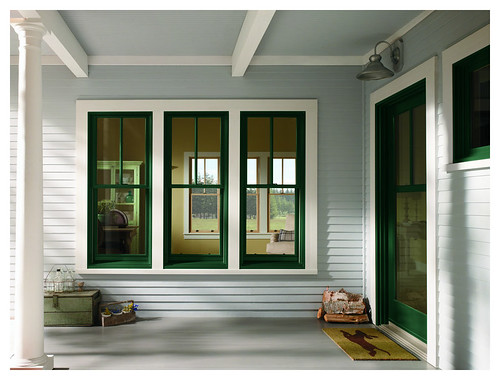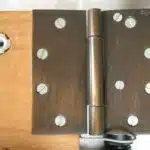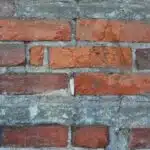Installing an exterior door is a necessary home improvement project for any homeowner. It not only enhances the aesthetic appeal of your home but also improves its safety and energy efficiency. However, installing an exterior door can be a challenging task for those without prior experience. This article will provide you with a step-by-step guide on how to install an exterior door in your home.
Before beginning the installation process, it is essential to note that the installation method may vary depending on the type of door and the size of the opening. There are several factors to consider, such as the condition of the existing frame, weather stripping, and insulation requirements. Therefore, it is crucial to have all the necessary tools and materials before starting this project. With careful planning and attention to detail, you can successfully install an exterior door that meets your needs and enhances your home’s functionality and curb appeal.
Assessing The Existing Door Frame
Are you ready to install an exterior door? Before you begin, it is crucial to assess the existing door frame. This assessment will help identify any potential issues that need to be addressed before proceeding with the installation. Common issues include rotting wood, cracks, or warping. These problems can compromise the structural integrity of the frame and lead to further damage down the road. It is essential to take care of these issues before installing a new door.
Repairing damage can range from simple fixes like filling in cracks with putty or replacing damaged weatherstripping, to more complex repairs like repairing or replacing rotted wood. If there is significant damage, it may be necessary to replace the entire door frame. A solid and stable frame is key to ensuring your new door functions correctly and lasts for years to come. By taking the time to assess and repair any issues with your current door frame, you will set yourself up for success when it comes time to install your new exterior door.
It’s important not only to fix any pre-existing conditions but also choose a quality replacement door that fits your needs and style preferences. Consider factors such as insulation efficiency, wind resistance, security features, and aesthetics when choosing the right type of door for your home or business. With these considerations in mind, let’s move on to step two: choosing the right type of door for your needs!
Choosing The Right Type Of Door
After assessing the existing door frame, choosing the right type of door is crucial for the successful installation of an exterior door. Door material selection is vital in this process as it affects the durability, security, and overall appearance of your home. Exterior doors are commonly made of wood, steel, fiberglass, or aluminum. Each material has its unique benefits and drawbacks that must be considered to make an informed decision.
Cost considerations also play a significant role in choosing the right type of door. Wooden doors tend to be more expensive but offer a classic look and feel while providing excellent insulation. Fiberglass doors are relatively affordable and require low maintenance but may not have the same level of style and elegance as wooden doors. Steel doors are durable, secure and cost-effective; however, they tend to be less energy-efficient than other materials. Aluminum doors are lightweight and affordable but may not provide adequate security against intruders.
Measuring the door opening accurately is essential before purchasing a new exterior door. The dimensions should be precise to ensure a proper fit and minimize any gaps that could cause drafts or water leaks. A helpful tip when measuring is to measure both the height and width at three points – top, middle, and bottom – to account for any irregularities in the frame’s shape or size. With accurate measurements and careful consideration of material selection and cost considerations, you can select the perfect exterior door for your home renovation project.
Measuring The Door Opening
Before installing an exterior door, it is crucial to measure the door opening accurately. This step ensures that the new door fits perfectly in the space provided and functions correctly. Measuring accuracy is critical in this process because even a small error can cause issues with the installation.
To prepare the door opening for measurement, remove any existing trim or molding around the frame. This allows for a clear view of the actual frame size and shape. Next, use a measuring tape to measure the width and height of the opening from several different points. It is essential to make sure that these measurements are precise and consistent.
Once you have measured your door opening accurately, it is time to gather the necessary tools and materials needed for installation. The right tools make all the difference in achieving good results. Tools such as a drill, screwdriver, shims, level, and hammer will be required. Additionally, you will need materials like screws, caulk, insulation foam, and weatherstripping to ensure proper sealing of your newly installed exterior door.
Gathering The Necessary Tools And Materials
To properly install an exterior door, you will need to gather the necessary tools and materials. Choosing the right materials is crucial to ensure that your new door is durable and efficient. For instance, fiberglass doors are popular for their energy efficiency and resistance to moisture, while steel doors are known for their strength and security.
In addition to choosing the right material, finding affordable options is also important. If you’re on a budget, consider shopping around at local hardware stores or online retailers for deals on exterior doors. You may also want to consider purchasing a pre-hung door, which comes with the frame already attached, as this can save you time and money on installation costs.
Before beginning the installation process, make sure you have all of the necessary tools and materials at hand. This includes a drill, screws, shims, a level, caulking gun, insulation strips, and weather stripping. With these items in hand, you’ll be ready to move onto the next step: removing the old door.
Removing The Old Door
Your old door may have served you well for years, but it’s time to bid farewell and make room for a new one. Just like an old friend who has seen better days, the door may need some attention before it goes. Assessing any damages is important before proceeding with its removal. You want to ensure that the frame and surrounding structure are still in good condition, so your new door can be installed securely.
When removing the old door, proper disposal must be considered. As a homeowner, you have a responsibility to dispose of materials safely and cleanly. Old doors can be heavy and cumbersome, so enlisting the help of a friend or professional is recommended. You can donate the old door if it’s in good condition or take it to a recycling center where its materials can be repurposed.
Removing an old door may seem like a simple task, but it requires careful consideration of various factors. Assessing damages and disposing of materials properly are vital first steps in ensuring that your new exterior door installation goes smoothly. Once these tasks are complete, you can move on to preparing the door frame for installation without any lingering doubts about safety or cleanliness.
Preparing The Door Frame For Installation
After removing the old door, it’s time to prepare the door frame for installation. This step is crucial in ensuring that your new door will fit properly and function well. Start by measuring the dimensions of your new door using measuring tools. Take note of its height, width, and thickness. These measurements will help you determine if the opening in your doorway needs to be adjusted.
Next, check the condition of the door threshold. This is the bottom part of your doorway where your new door will rest upon. If it’s damaged or worn out, replace it before installing a new door. Remember that a good threshold should be level and sturdy enough to support the weight of your new door.
Now that you have prepared the doorway and checked the threshold, it’s time to move on to installing the door jamb. This is an important part of ensuring that your new door fits snugly into place and functions properly. Before proceeding with this step, make sure that you have all necessary materials such as nails or screws, shims, and a hammer or drill. With proper preparation and attention to detail, you can successfully install an exterior door in no time!
Installing The Door Jamb
With the door opening framed and prepped, it’s time to install the door jamb. This is where you’ll be placing the hinges and latches, so it’s crucial to get this step right. First, make sure that the jamb is level and plumb by using a carpenter’s level. Then, attach the jamb using galvanized screws, making sure to secure it tightly.
Jamb installation tips:
- Use shims to ensure that the jamb is flush with the wall.
- Pre-drill holes for screws to avoid splitting the wood.
- Check that there is enough clearance for the door to swing open and close smoothly.
Once you’ve installed the jamb, it’s important to weatherproof it properly. Apply weatherstripping around all four sides of the frame to prevent drafts and keep moisture out. You can also add a drip cap above the door to deflect rainwater away from your home.
Incorporating these weatherproofing techniques will ensure that your exterior door lasts longer and performs better in harsh conditions. With a properly installed jamb and weatherproofed frame, your exterior door will provide security and comfort for years to come.
Now that you have completed installing the door jamb and have successfully weatherproofed it, it’s time to move onto placing the door into the frame.
Placing The Door Into The Frame
Now that the door frame has been prepared, it is time to place the door into the frame. This step is crucial in ensuring that the door fits perfectly and operates smoothly. Before placing the door, it is important to check if the frame is level by using leveling techniques. A level frame will prevent any gaps between the door and the frame, which can cause air leaks and reduce energy efficiency.
Once you have confirmed that the frame is level, you can proceed to place the door into position. Start by inserting one hinge pin halfway into its hole on the top of one of the hinges. Then, carefully lift one side of the door and align it with one side of the frame. With one hand holding onto the hinge pin, use your other hand to adjust and align the other hinge with its corresponding hole in the frame.
After successfully placing your door into position, you can seal it with appropriate sealing methods to provide airtight insulation around its edges. This will help improve energy efficiency and keep out any drafts or moisture from outside. Once you have completed these steps, you are now ready for securing your door with screws and hinges.
Securing The Door With Screws And Hinges
Installing an exterior door can be a daunting task, but once it is in place, you want to ensure that it stays secure. That’s where screws and hinges come into play. By properly securing your door with these components, you can have peace of mind knowing that your home is safe and secure.
To start, adjust the hinges so that they are square with the door frame. This will prevent any binding or rubbing between the door and the frame when opening or closing. Tightening screws on the hinges will also ensure that they are securely fastened to both the door and frame. If not tightened properly, screws can loosen over time and cause misalignment of the hinges.
Common hinge and screw problems include stripped screw holes and loose hinge pins. To avoid these issues, use longer screws than what comes standard with most doors. This will provide a stronger hold in both the door jamb and frame. Additionally, check hinge pins regularly to ensure they are not loose as this can cause sagging or misalignment of the door.
Properly securing your exterior door with screws and hinges is essential for keeping your home safe from intruders and weather damage. By adjusting hinges and tightening screws, you can avoid common problems such as stripped screw holes or loose hinge pins. In our next section, we will discuss how to install a lockset and doorknob to complete your installation process seamlessly.
Installing The Lockset And Doorknob
Now that the door is secured with screws and hinges, it’s time to move on to installing the lockset and doorknob. Before starting this step, it’s important to select the appropriate hardware for your specific door. Make sure to consider factors such as the type of lock you want, whether you want a keyed or keyless entry, and the overall style of your home. Once you have all necessary hardware, follow these steps:
First, install the latch plate onto the edge of the door by screwing it into place. Then, attach the exterior portion of the lockset onto the outer face of the door following manufacturer instructions. Next, insert the latch into its housing on the edge of the door and test it to make sure it moves smoothly in and out.
Once that’s done, install your chosen doorknob or handle onto both sides of the door using screws provided by the manufacturer. Finally, test everything out by turning and locking/unlocking from both sides. If there are any issues with smooth operation or alignment, troubleshoot accordingly.
In summary, selecting appropriate hardware is key when installing a lockset and doorknob onto an exterior door. Taking care during this step will ensure proper function and security long-term. Remember to troubleshoot any issues that may arise before moving on to adding weather stripping and insulation in order to effectively complete your installation process.
Adding Weather Stripping And Insulation
Choosing insulation for your exterior door is an important step to ensure energy efficiency and temperature control in your home. There are a variety of insulation types available, such as fiberglass, foam board, and spray foam. Fiberglass is the most common type of insulation used for doors due to its affordability and ease of installation. Foam board provides extra insulation but can be more difficult to install, while spray foam offers the highest level of insulation but is also the most expensive.
Weather stripping options come in different materials, such as vinyl, rubber, or metal. Vinyl weather stripping is easy to install and provides a good seal against air leaks. Rubber weather stripping is durable and can withstand extreme temperatures, while metal weather stripping offers superior protection against drafts and moisture. Choose the best option for your needs by considering factors such as climate and budget.
Once you have chosen your insulation and weather stripping options, it’s time to install them on your exterior door. Apply weather stripping around the edges of the door frame using adhesive or nails, making sure that there are no gaps or spaces where air can leak through. For insulation, cut pieces to fit inside the door frame snugly and secure them with adhesive or staples. This will help keep your home comfortable and energy-efficient all year round.
As you finish adding weather stripping and insulation to your exterior door, it’s important not to forget about finishing touches that will enhance both its appearance and functionality. In the next section, we’ll discuss how to finish off the exterior of your door by adding hardware such as locks or handles, painting or staining the door frame for added protection against the elements, and ensuring that any gaps between the door frame and wall are sealed with caulk or trim. With these final steps complete, you can enjoy a beautiful new exterior door that will provide comfort, security, and energy efficiency for years to come.
Finishing The Exterior Of The Door
After adding weather stripping and insulation, it’s time to focus on finishing the exterior of your new door. Applying sealant is an important step to ensure that your door is protected from moisture and other outdoor elements. Before applying the sealant, make sure to clean the surface of the door thoroughly with soap and water, then let it dry completely.
Once the door surface is clean and dry, apply a bead of silicone or polyurethane sealant along the bottom edge of the door. Use a caulk gun or a putty knife to spread the sealant evenly along the entire perimeter of the door. Make sure that you seal all gaps between the door and its frame, as well as any holes or gaps in the outer layer of your home’s siding.
After applying sealant, it’s time to paint the exterior of your new door. Choose a paint color that complements your home’s exterior and follows manufacturer instructions for application. Allow adequate drying time before closing or using your new door. In addition to adding curb appeal, painting your exterior door can also prolong its lifespan by protecting it from weathering effects such as fading, cracking, and peeling.
As you near completion of installing an exterior door, one final step that must not be overlooked is adjusting the door for proper fit. This involves ensuring that there are no air leaks around the edges of the door when it is closed and also checking that it opens and closes smoothly without sticking or rubbing against its frame or threshold. With these final adjustments completed, you can enjoy all the benefits of a properly installed exterior door – energy efficiency, security, and enhanced aesthetics!
Adjusting The Door For Proper Fit
Did you know that according to a survey conducted by the National Association of Home Builders, replacing an exterior door can increase the value of your home by up to $8,000? However, for the door to add value to your home and function properly, it must be installed correctly. After hanging the door on its hinges, it may be necessary to adjust it for proper fit.
Here are four steps for adjusting an exterior door:
- Adjusting hinge screws: If the door is rubbing against the frame or not closing properly, try tightening or loosening the screws in the hinges.
- Trimming excess: If there is excess material on any side of the door preventing it from closing properly, use a saw or sander to remove that material.
- Shimming: To correct any gaps between the frame and door, insert shims between the two and tap them into place with a hammer.
- Checking weatherstripping: Make sure that weatherstripping is properly installed around all sides of the door to prevent drafts and energy loss.
By following these steps for adjusting an exterior door, you can ensure that it functions properly while also improving your home’s value. Once adjustments have been made, it’s important to test the door for smooth operation before finishing installation and moving onto other projects.
Testing The Door For Smooth Operation
After adjusting the door for proper fit, you will need to check the alignment of the hinges. Use a level to ensure that the door is hanging straight and that the top of the door is level with the frame. If necessary, adjust the hinges until they are aligned properly. This step is important to ensure that your new exterior door can be opened and closed smoothly.
Once you have checked alignment, it’s time to lubricate the hinges. Use a silicone-based lubricant or any other recommended lubricant to coat each hinge pin thoroughly. This will help prevent rust and corrosion and keep your hinges working smoothly for years to come. Be sure not to over-lubricate as this can attract dust and dirt which can cause problems in the long run.
After checking alignment and lubricating your hinges, it’s time to test your new exterior door for smooth operation. Open and close it several times, paying attention to how it feels when you do so. It should open and close smoothly without any resistance or sticking points. If there are any issues, go back through these steps again until everything is working perfectly.
Maintaining your new exterior door is just as important as installing it correctly. Regularly inspecting and cleaning your door can help prevent problems down the road. In our next section, we will discuss some tips for maintaining your new exterior door so that you can enjoy its benefits for years to come.
Maintaining Your New Exterior Door
As a homeowner, it is essential to maintain your new exterior door properly. Proper door maintenance will ensure that the door functions efficiently and lasts longer. One of the critical aspects of maintaining your new exterior door is weather protection. Doors are exposed to varying weather conditions such as rain, snow, and extreme temperatures. Without proper weather protection, the door may warp or crack, making it less secure.
To protect your new exterior door from harsh weather conditions, consider installing a storm door. A storm door acts as an extra layer of protection against rain, wind, and snow. It also helps to insulate the house by preventing cold air from entering the house during winter. Another way to protect your new exterior door is by applying a coat of paint or stain regularly. Paint or stain not only enhances the appearance of the door but also seals it from moisture.
Another essential aspect of maintaining your new exterior door is regular cleaning and inspection. Dirt and grime can accumulate on the surface of the door over time, causing discoloration or even rusting if left unattended. Therefore, it is crucial to clean the exterior door regularly using mild soap and water. Additionally, inspect the hardware such as hinges and locks for any signs of wear and tear. Addressing these issues early on can prevent further damage to your new exterior door in the long run.
Nested Bullet Point List:
- Weather Protection
- Consider Installing a Storm Door
- Apply a Coat Of Paint Or Stain Regularly
- Regular Cleaning And Inspection
- Clean The Exterior Door Regularly Using Mild Soap And Water
- Inspect Hardware Such As Hinges And Locks For Any Signs Of Wear And Tear – Check The Weatherstripping for Any Damage Or Wear And Replace If Necessary
Conclusion
When it comes to installing an exterior door, there are several key steps that must be followed in order to ensure a successful outcome. First, it is important to assess the existing door frame and choose the right type of door for your needs. From there, measuring the door opening and gathering the necessary tools and materials will be crucial in preparing for the installation process.
Next, removing the old door and finishing the exterior of the new one will require attention to detail and careful planning. Adjusting the door for proper fit is also essential, as is testing it for smooth operation once installed. Finally, maintaining your new exterior door will help ensure its longevity and continued functionality.
Overall, with these steps in mind, anyone can successfully install an exterior door with confidence. By carefully following each step and paying close attention to detail along the way, you can achieve a high-quality result that will serve you well for years to come. Whether you’re looking to improve your home’s curb appeal or simply replace a worn-out entryway, installing an exterior door is a worthwhile investment that can bring many benefits over time.
Image Credits
- “400 Series Windows and Patio Door with Exterior Trim” by Andersen Windows (featured)





























